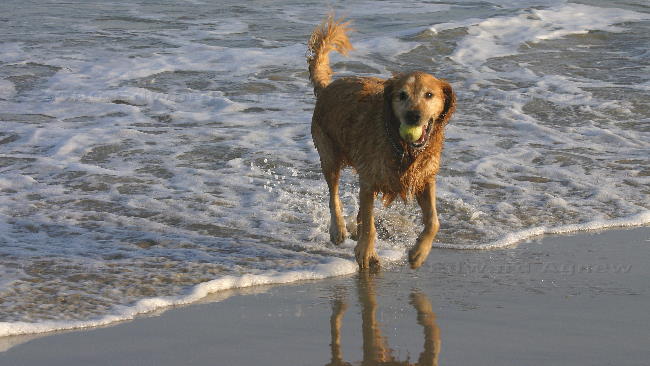Saturday, March 04, 2006
Turtle Patrol

Life is great --- what more can you want then the beach and a ball?
If you wish you can sign our guest book
This web page documents our travels in our RV we have named the "Dog House" Leaving Ontario June 26th 2005 on a year long trip to the Yukon, Alaska, BC then south to Utah, Arizona and Texas The Crew: Captain Zaphod the dog, Helm: Ed, Cook: Frances NOTE: this website is best seen with 1024x768 or higher resolution screen See the milestone dates in right side column to better select archived files

If you wish you can sign our guest book
Date Milestones
NOTE: These are NOT HOT LINKED, but at least will tell you what month to open in the Archives below
2005:
May 26; leave Ontario
June 02; enter Alberta
June 05; reach Dawson Creek, start of the Alaska/Canadian (Alcan) highway
June 13; Skagway AK
June 21; Reach Dawson City YK
June 24; travel top of World Highway
July 04; Deneli NP AK
July 12; Anchorage AK
Aug 07; return to BC
Aug 29; Vancouver Island
Sept 23; Penticton BC
Oct 14; leave BC heading south
Oct 16; Moab UT
Oct 27; Las vegas NV
Nov 27; Arizona
2006:
Jan 16; Big Bend NP TX
Jan 26; Rio Grande Valley
Mar 01; Port Aransas
Apr 01; San Antonio
COPYRIGHT NOTICE. All text and Photographs are Copyrighted by E. Agnew, ©2005-2006 and may not be used without the permission of the author. All images contain watermarks, if you would like to obtain a good quality image file suitable for printing, see my stock photo page
To Send us an Email, Please use this form, (you must fill the form in before clicking the submit button otherwise we get a blank email)Thanks